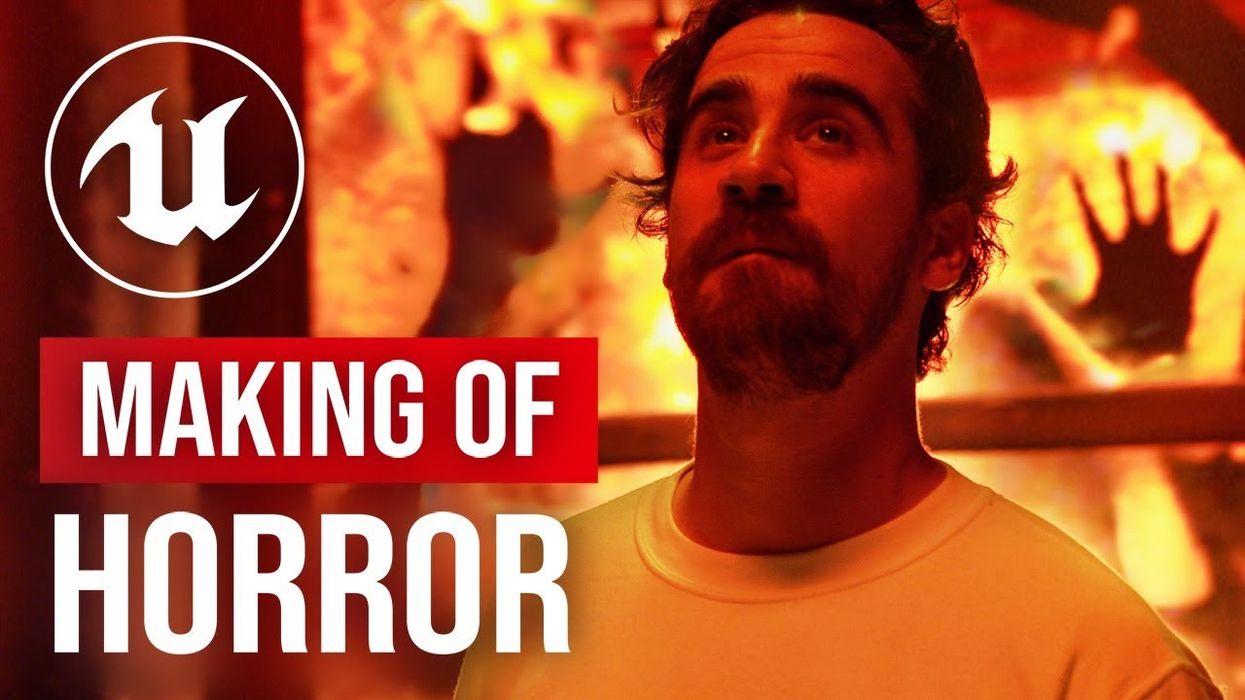Your Guide to Making a Virtual Horror Film in Unreal Engine 5
Tips for using Unreal Engine 5 as part of your virtual production process.

Virtual Production tips for Unreal Engine 5
It’s crazy to think, but filmmakers can now realistically shoot an entire film virtually. And while perhaps scary to some who might always prefer shooting real life and on-location, we can all agree that it’s better than having AI do it all for us.
All jokes aside, this new technology is pretty cool and it’s fun to see it in action, even if certain parts of these virtual productions are still a work-in-progress. Let’s take an in-depth look into how you can use Unreal Engine 5 to power your virtual productions and even create your own hellscape-filled horror short film in the process.
Unreal Engine 5 On-Set
This example that we’re going to explore comes to us from YouTuber Josh Toonen and his team as they create their very own horror short film. For this project they’re exclusively working as a virtual production and using Unreal Engine 5 on-set for in-camera visual effects (ICVFX as it’s called in the industry).
The video features Teamd PXO and several other talented artists, along with Toonen himself who has been working on projects as an on-set Unreal operator, which is a new career track certainly worth exploring for anyone interested in this virtual production technology and its technical backend work.
What’s cool about this project too is that it really illustrates how tricky and technical this workflow is, but also, at the same time, showcases how easy it can be when you have a dedicated team and a lot of creative energy. The end results certainly speak for themselves too as the ICVFX look amazing.
What to Learn for ICVFX
So, as you can see in the video breakdown above, Toonen and crew go through the complete ICVFX process from start to finish. And there are some great tidbits and pieces of advice throughout as the crew really showcase all of the steps of virtual production.
Some of the key takeaways worth monitoring for include:
- How In-Camera Visual Effects (ICVFX) is shaking up the filmmaking landscape
- Why and when Virtual Production works and how to fix when it doesn't
- Tips to build Virtual Film Sets and Environments for on-set shoots
- Using Sequencer on the LED Stage to bring your Unreal cinematics to life
In particular, the parts where we see Toonen working in Unreal Engine 5 itself and working with the Unreal cinematics and the Sequencer and Movie Render Queue, are probably the most insightful for those looking to start exploring the space themselves.
The Future of Virtual Production and Unreal
At the end of the day, this video above is at best a solid case study into the current landscape of ICVFX, as well as great inspiration for those looking to explore. However, it’s undeniable that this technology will continue to advance and most certainly become more mainstream as it gets better and cheaper in the future.
We’ve written quite a bit about virtual production here on No Film School in the past, and with helpful videos like this coming out more often, we’ll be sure to keep you tuned to the latest innovations and helpful resources as they come out.- How Unreal Engine Changes Pre-Production Workflows for Any Production ›
- What Does Unreal Engine 5 Mean for Filmmakers? ›
- Virtual Production Is Here, and You Can Learn All About It ›
- How Unreal Engine Finally Gives Small Indie Teams the Ability to Animate Features ›
- How To Create an Animated Short in Unreal Engine ›
- Can DIY Filmmakers Create Their Own Virtual Production? ›
- Sony and Epic Games Are Changing Virtual Production, and This Matters to All Filmmakers ›











